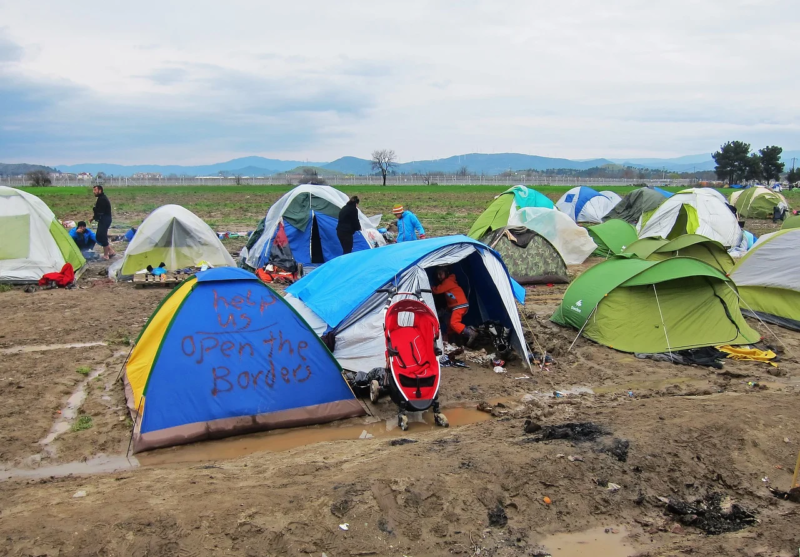The United Nations High Commissioner for Refugees (U.N.H.C.R) and other humanitarian agencies have expressed growing concern for those in need as 2020 marked the lowest number of safe refugee resettlements in nearly two decades. Not only have recipient countries lowered their refugee admission quotas, but the coronavirus pandemic also introduced a wave of new challenges. Experts hope that 2020’s low numbers are an irregularity, an issue that can be combated by expanding refugee resettlement programs, expediting the processing of refugee resettlement cases, and offering more places for relocation. Many are hopeful that President Joe Biden will follow through on his promise to raise the low U.S. refugee cap set by his predecessor.
“Barely 1.6% of 1.44 million people with refugee status who were prioritized for resettlement in another country of asylum last year found new homelands through the U.N. refugee agency,” Reuters reports. In contrast, the U.N.H.C.R. resettled 63,696 refugees in 2019.
The drop to 22,770 admissions is the result of both lowered quotas and the coronavirus pandemic. The U.N.H.C.R.’s Assistant High Commissioner for Protection said, “We can only hope that 2020 will be an extreme anomaly for refugee resettlement. We urgently call on governments to boost their programs this year, offer more places, expedite the processing of cases and help us save lives.”
The National Immigration Forum notes that, although the U.S. has historically resettled more refugees than any other country, its resettlement program has not kept up with the increasing global refugee population. The refugee limit for the fiscal year (F.Y.) of 2021, capped at 15,000, is the lowest it has been since the passage of the Refugee Act of 1980, the federal immigration law that standardized the process for admitting refugees into the U.S. Significantly fewer refugees were admitted starting in 2017, from 85,000 refugees in 2016 to fewer than 54,000 the next year. The U.S. cap on refugee resettlements has only continued to decrease. While the cap was set for 18,000 for the F.Y. 2020, the National Immigration Forum points out that the cap only represents the maximum number of refugees that may be resettled in a year – not those who are actually resettled. In actuality, only 11,814 people in that year were resettled.
Donald Trump’s Report to Congress states that almost 7,000 of the 18,000 refugee numbers available under the FY 2020 went unused. However, Trump’s proposal for FY 2021 includes how these places might have been used if not for COVID-19, which resulted in significant decreases in refugee resettlement in the U.S. According to the report, the pandemic reduced flight availability and increased travel restrictions in and out of refugee processing sites worldwide, hindering the process of resettlement. The process of assimilating resettled refugees was also hindered due to widespread hiring freezes, layoffs, reduced hours/wages, the hit to transportation and hospitality industries, and the closure of schools and childcare centers.
Conflict, climate change, and the pandemic have exacerbated the need for resettlement programs. As a candidate, Biden said he would raise the cap for refugee resettlement from the low 15,000 to 125,000. This is a step in the right direction. If the U.S. increases its refugee numbers, the country can lead by example, encouraging and incentivizing other countries to take in more refugees as well. How Biden will effect these changes, whether through repealing former executive orders, issuing executive orders, or gaining bipartisan support, is still to be seen.
While accepting more refugees is commendable, it is only the best temporary and immediate solution. Countries which take in refugees must do two things to save lives. First, countries must address the root causes of displacement, such as conflict, climate change, and even the pandemic. This involves signing treaties and agreements that attempt to solve these issues. Second, countries must remain committed to providing humanitarian assistance. The International Rescue Committee, for example, provides much-needed aid in Central America to combat the root causes of displacement.
The unfortunate reality is that, according to the International Rescue Committee, less than one percent out of the 26 million refugees worldwide are considered for resettlement. As conflict and climate change continue to displace people from their homes, the need for a solid refugee resettlement program is great. COVID-19 has further worsened the situation for nations struggling with displaced populations. As the battles against these disasters continue, we cannot forget the stark reality of the refugees affected by the crisis.
- “Europe’s Last Dictatorship,” EU Investment For Belarus Placed on Hold Until it Respects Democracy - June 15, 2021
- Sexual Violence As A Weapon of War In Ethiopia’s Tigray Conflict, UN Calls For An End To the ‘Horrific’ Violence - April 2, 2021
- Refugee Resettlement Reaches 20-Year Low - February 23, 2021


